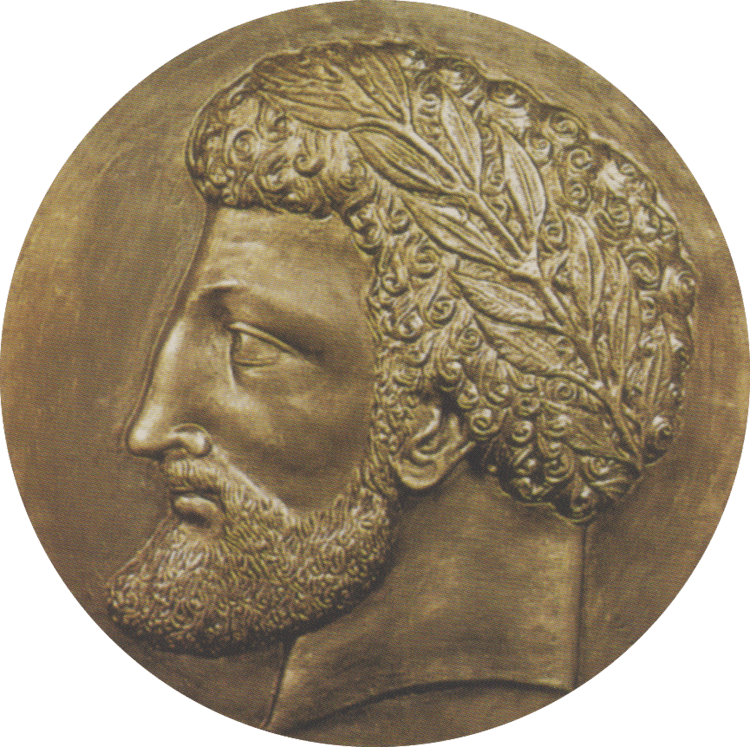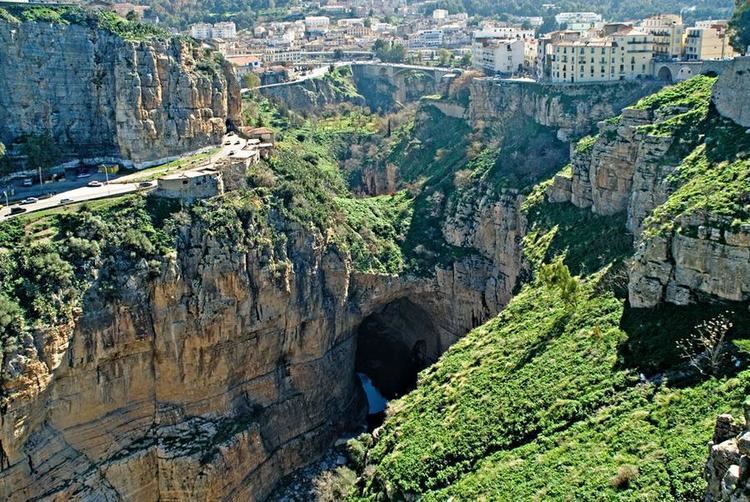Country Algeria District Constantine District | Population 465,021 (1998) Area 2,288 km2 | |
 | ||
University Universite Constantine 1 | ||
Map of Constantine, Algeria
Not to be confused with Constantinople, the historical city from 330 to 1453 in Thrace, now Istanbul, Turkey.
Contents
- Map of Constantine Algeria
- Beautiful places north africa constantine algeria 2014 inspiration
- Olympic sport centre in constantine algeria stadium 50 000
- Ancient history
- Modern history
- Geography
- Climate
- Notable people
- Main sights
- Education
- Transportation
- Twin towns Sister cities
- References

Constantine (Arabic: قسنطينة,Qusanṭīnah, Berber: ⵇⵙⴻⵏⵟⵉⵏⴰ, also spelled Qacentina or Kasantina) is the capital of Constantine Province in north-eastern Algeria. During Roman times it was called Cirta and was renamed "Constantina" in honour of emperor Constantine the Great. It was the capital of the same-named French département until 1962. Slightly inland, it is about 80 kilometres (50 miles) from the Mediterranean coast, on the banks of the Rhumel river.

Regarded as the capital of eastern Algeria and the centre of its region, Constantine has a population of 448,374 (938,475 with the agglomeration), making it the third largest city in the country after Algiers and Oran. There are museums and important historical sites around the city.
It is often referred to as the "City of Bridges" due to the numerous picturesque bridges connecting the mountains the city is built on.
Constantine was named the Arab Capital of Culture in 2015.
Beautiful places north africa constantine algeria 2014 inspiration
Olympic sport centre in constantine algeria stadium 50 000
Ancient history
The city was originally created by the Phoenicians, who called it Sewa (royal city). Later it was renamed Cirta, by the Numidian king Syphax, who turned it into his capital. The city was taken over by Numidia, the country of the Berber people, after the Phoenicians were defeated by Rome in the Third Punic War. In 112 BC the city was occupied by Jugurtha who defeated his half-brother Adherbal. The city later served as the base for Roman generals Quintus Caecilius Metellus Numidicus and Gaius Marius in their war against Jugurtha. Later, with the removal of King Juba I and the remaining supporters of Pompey in Africa (c. 46), Julius Caesar gave special rights to the citizens of Cirta, now known as Colonia Sittlanorum.
In 311, during the civil war between emperor Maxentius and usurper Domitius Alexander (a former governor of Africa), the city was destroyed. Rebuilt in 313, it was subsequently named after emperor Constantine the Great, who had defeated Maxentius. Captured by the Vandals in 432, Constantine returned to the Byzantine Exarchate of Africa (i.e. North Africa) from 534 to 697. It was conquered by the Arabs in the 7th century, receiving the name of Qusantina.
Modern history
The city recovered in the 12th century and under Almohad and Hafsid rule it was again a prosperous market, with links to Pisa, Genoa and Venice. Since 1529 it was intermittently part of Ottoman Empire, ruled by a Turkish bey (governor) subordinate to the dey of Algiers. Salah Bey, who ruled the city in 1770–1792, greatly embellished it and built much of the Muslim architecture still visible today.
In 1826 the last bey, Ahmed Bey ben Mohamed Chérif, became the new head of state. He led a fierce resistance against French forces, which invaded Algeria four years later. By 13 October 1837, the territory was captured by France, and from 1848 on until 1962 it was an integral part of the French motherland and centre of the Constantine Département. Under the French rule, there were Muslim anti-Jewish riots in Constantine in 1934 when 34 Jews were killed.
In World War II, during the campaign in North Africa (1942–43), Constantine and the nearby city of Sétif were used by the Allied forces as operational bases.
In 1880, while working in the military hospital in Constantine, Algeria, Charles Louis Alphonse Laveran discovered that the cause of malaria is a protozoan, after observing the parasites in a blood smear taken from a soldier who had just died of malaria. For this, he received the 1907 Nobel Prize for Physiology or Medicine. This was the first time that protozoa were shown to be a cause of disease. His work helped inspire researchers and veterinarians today to try to find a cure for malaria in animals.
In 11th century, Banu Hilal, an Arab tribe living between Nile and Red Sea, settled in Tunisia, Tripolitania (western Libya) and Constantinois (eastern Algeria) which was Constantine party.
Geography
Constantine is situated on a plateau at 640 metres (2,100 ft) above sea level. The city is framed by a deep ravine and has a dramatic appearance. The city is very picturesque with a number of bridges over Rhumel river and a viaduct crossing the ravine. The ravine is crossed by seven bridges, including Sidi M'Cid bridge. Constantine is the railhead of a prosperous and diverse agricultural area. It is also a centre of the grain trade and has flour mills, a tractor factory, and industries producing textiles, wool, linen and leather goods. Algeria and Tunisia serve as its markets.
Climate
Constantine has a Mediterranean climate (Köppen climate classification Csa), with hot, dry summers and mild, moist winters.
Notable people
Constantine has been the hometown of many noteworthy people in Algeria and France.
Main sights
The city is framed by a deep ravine and has a dramatic appearance. In 1911, Baedeker described it as "resembling the Kasba of Algiers, the picturesque charm of which has so far been marred by the construction of but a few new streets."
Nearby are
The topography of the city is unique and it determines the need for bridges. At the end of the 19th century, Guy de Maupassant wrote: "Eight bridges used to cross this ravine. Six of these bridges are in ruins today." Today the most important bridges are:
Education
Constantine has multiple universities: Mentouri Public University, designed by the Brazilian architect Oscar Niemeyer, and Algerian architect Rashid Hassaine, Zerzara maths and architecture university, Emir Abdelkader University which is one of the biggest Islamic universities with many faculties covering religious studies, foreign languages, literature. Constantine's new town "nouvelle ville ali mendjeli" has two big universities: Université Constantine 2 known as "lella nsoumer" offering maths, computer and economy majors, and the new university is actually a university pole with more than 20,000 students, 17 faculties and more than 40,000 residents. It is now the largest African university under the name of "Université de Constantine 3".
Transportation
Constantine is served by Mohamed Boudiaf International Airport.
Twin towns — Sister cities
Constantine is twinned with:
Grenoble, France Fatih, Turkey Sousse, Tunisia